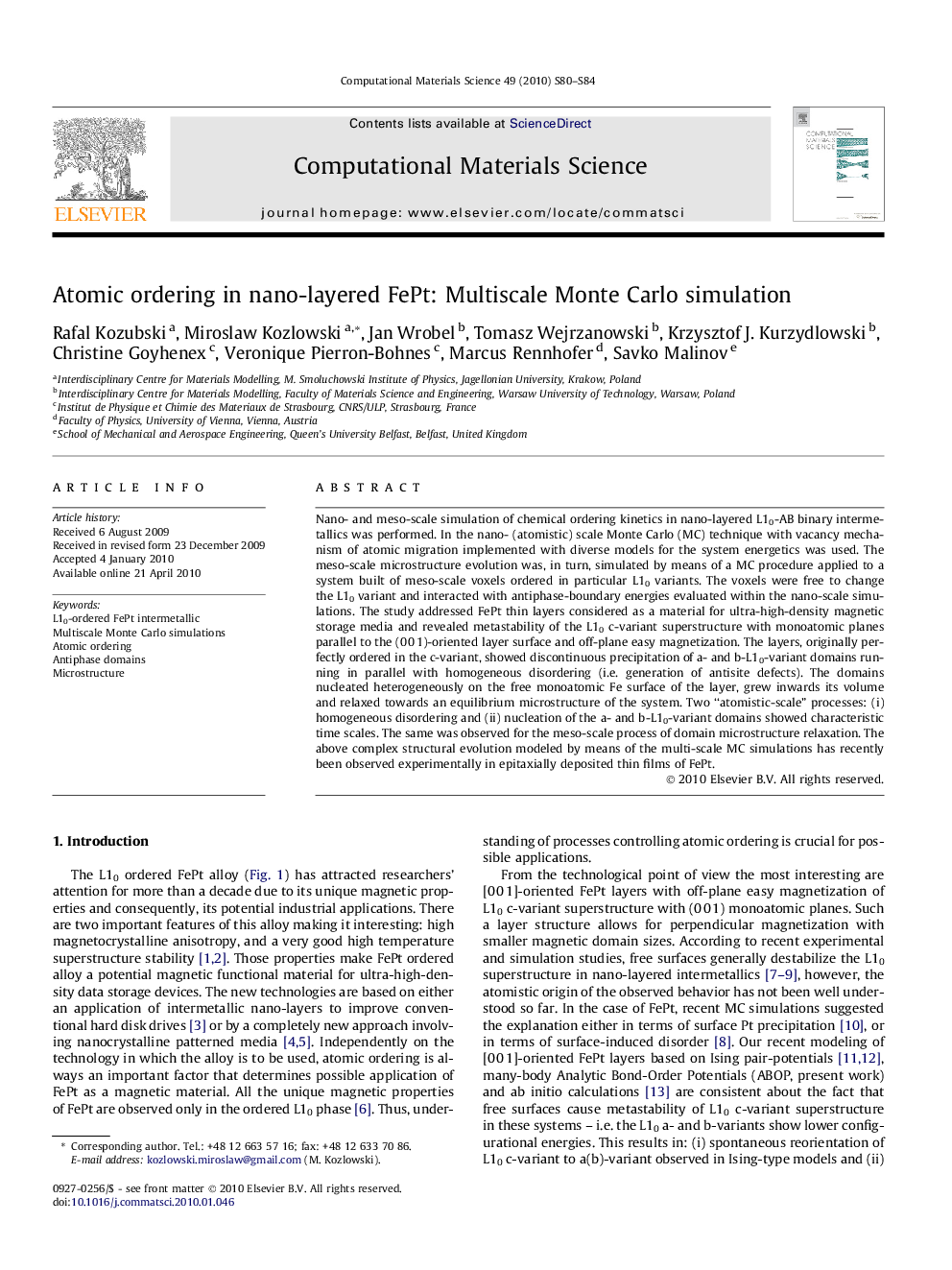| Article ID | Journal | Published Year | Pages | File Type |
|---|---|---|---|---|
| 1563011 | Computational Materials Science | 2010 | 5 Pages |
Nano- and meso-scale simulation of chemical ordering kinetics in nano-layered L10-AB binary intermetallics was performed. In the nano- (atomistic) scale Monte Carlo (MC) technique with vacancy mechanism of atomic migration implemented with diverse models for the system energetics was used. The meso-scale microstructure evolution was, in turn, simulated by means of a MC procedure applied to a system built of meso-scale voxels ordered in particular L10 variants. The voxels were free to change the L10 variant and interacted with antiphase-boundary energies evaluated within the nano-scale simulations. The study addressed FePt thin layers considered as a material for ultra-high-density magnetic storage media and revealed metastability of the L10 c-variant superstructure with monoatomic planes parallel to the (0 0 1)-oriented layer surface and off-plane easy magnetization. The layers, originally perfectly ordered in the c-variant, showed discontinuous precipitation of a- and b-L10-variant domains running in parallel with homogeneous disordering (i.e. generation of antisite defects). The domains nucleated heterogeneously on the free monoatomic Fe surface of the layer, grew inwards its volume and relaxed towards an equilibrium microstructure of the system. Two “atomistic-scale” processes: (i) homogeneous disordering and (ii) nucleation of the a- and b-L10-variant domains showed characteristic time scales. The same was observed for the meso-scale process of domain microstructure relaxation. The above complex structural evolution modeled by means of the multi-scale MC simulations has recently been observed experimentally in epitaxially deposited thin films of FePt.
